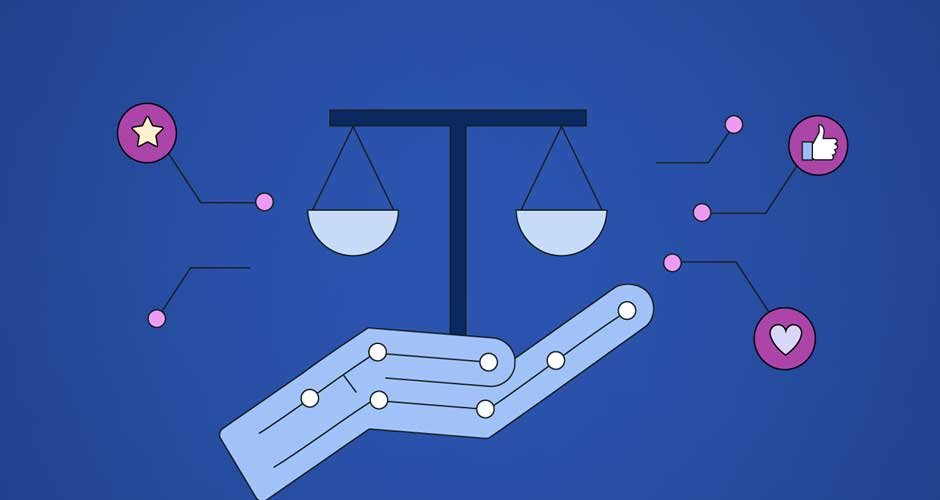In today’s rapidly evolving technological landscape, artificial intelligence (AI) is increasingly permeating various aspects of our lives, including the workplace. While AI offers numerous benefits such as increased efficiency, productivity, and decision-making capabilities, its integration into the workplace also raises significant ethical considerations. Chief among these concerns are ensuring fairness and transparency in AI systems. Seamlessly integrate AI into your workplace with the expertise of Managed IT Services Baton Rouge professionals.
In this blog post, we will explore the ethical implications of AI in the workplace and discuss strategies for promoting fairness and transparency in AI-driven decision-making processes.
Understanding AI in the Workplace
Before delving into the ethical considerations, it’s essential to understand the role of AI in the workplace. AI refers to the simulation of human intelligence in machines programmed to mimic cognitive functions such as learning, problem-solving, and decision-making. In the workplace, AI systems are utilized for a variety of tasks, including recruitment, employee performance evaluation, workflow optimization, and customer service.
The Ethical Imperative: Ensuring Fairness
Fairness in AI refers to the unbiased treatment of individuals or groups. However, ensuring fairness in AI systems is challenging due to inherent biases in data and algorithms. Biases can creep into AI systems in various ways, such as biased training data, biased algorithms, or biased decision-making processes.
One of the key challenges in ensuring fairness in AI is the lack of diversity in the datasets used to train these systems. If the training data is not representative of the population, the AI system may make biased decisions. For example, if a facial recognition system is trained primarily on data from white individuals, it may perform poorly on people of color.
Transparency: The Key to Building Trust
Transparency in AI refers to the openness and clarity of AI systems and their decision-making processes. Transparency is essential for building trust among employees, customers, and stakeholders. When AI systems are transparent, individuals can understand how decisions are made and can hold the system accountable for its actions.
One way to achieve transparency in AI is through explainability. Explainable AI (XAI) refers to AI systems that can explain their decisions clearly and understandably. XAI techniques, such as generating explanations in natural language or visualizing decision-making processes, can help individuals understand how AI systems arrive at their decisions.
Ethical Challenges of AI in the Workplace
Bias and Discrimination: A key ethical issue regarding AI in professional settings revolves around the risk of bias and discrimination. AI algorithms learn from past data, which could harbor underlying biases. If these biases are not addressed, AI systems can perpetuate and even exacerbate existing inequalities in the workplace, such as gender or racial discrimination in hiring practices. Overcome AI challenges in the workplace with the assistance of IT Consulting Lafayette experts.
Lack of Transparency: Another significant challenge is the need for more transparency in AI systems. Many AI algorithms operate as “black boxes,” meaning that their decision-making processes are opaque and difficult to interpret. This lack of transparency can erode trust among employees and stakeholders who are affected by AI-driven decisions.
Privacy Concerns: AI systems often rely on vast amounts of data, including personal and sensitive information about employees. There is a risk that this data may be misused or compromised, leading to privacy violations and breaches of confidentiality.
Job Displacement: The widespread adoption of AI in the workplace has led to concerns about job displacement and unemployment. While AI can automate routine tasks and improve efficiency, it may also eliminate certain jobs altogether, particularly those that are repetitive or low-skilled.
Strategies for Promoting Fairness and Transparency
Diversity in Data Collection: To mitigate bias in AI systems, organizations should ensure that the data used to train these systems is diverse and representative of the population. This may involve collecting data from a wide range of sources and taking proactive steps to address any existing biases in the data.
Algorithmic Transparency: Organizations should strive to make AI algorithms more transparent and interpretable. This can be achieved through techniques such as explainable AI, which provides insights into how algorithms arrive at their decisions. By increasing transparency, organizations can enhance accountability and build trust with employees and other stakeholders.
Ethical Guidelines and Standards: Establishing ethical guidelines and standards for the development and deployment of AI in the workplace is essential. These guidelines should address issues such as bias mitigation, data privacy, and algorithmic transparency. By adhering to clear ethical principles, organizations can ensure that AI systems are designed and implemented responsibly.
Human Oversight and Accountability: While AI can automate certain tasks, human oversight remains critical, particularly when it comes to high-stakes decisions such as hiring or performance evaluation. Organizations should implement mechanisms for human oversight and accountability to ensure that AI-driven decisions are fair and equitable.
Continuous Monitoring and Evaluation: Ethical considerations should be integrated into every stage of the AI lifecycle, from development and training to deployment and monitoring. Organizations should continuously monitor and evaluate AI systems to identify and address any ethical issues that may arise over time.
Conclusion
As AI continues to transform the workplace, organizations must prioritize ethical considerations such as fairness and transparency. By addressing issues such as bias, lack of transparency, and privacy concerns, organizations can harness the full potential of AI while minimizing its negative impacts on employees and stakeholders. Through the adoption of ethical guidelines, algorithmic transparency, and human oversight, we can ensure that AI systems in the workplace are designed and deployed responsibly and equitably. Only by confronting these ethical challenges head-on can we create a future where AI contributes to a more fair and inclusive workplace for all.












